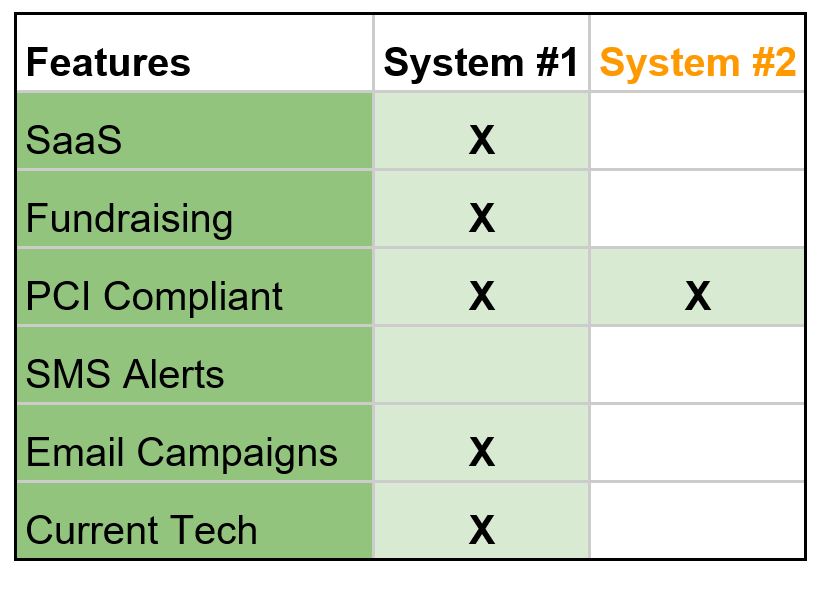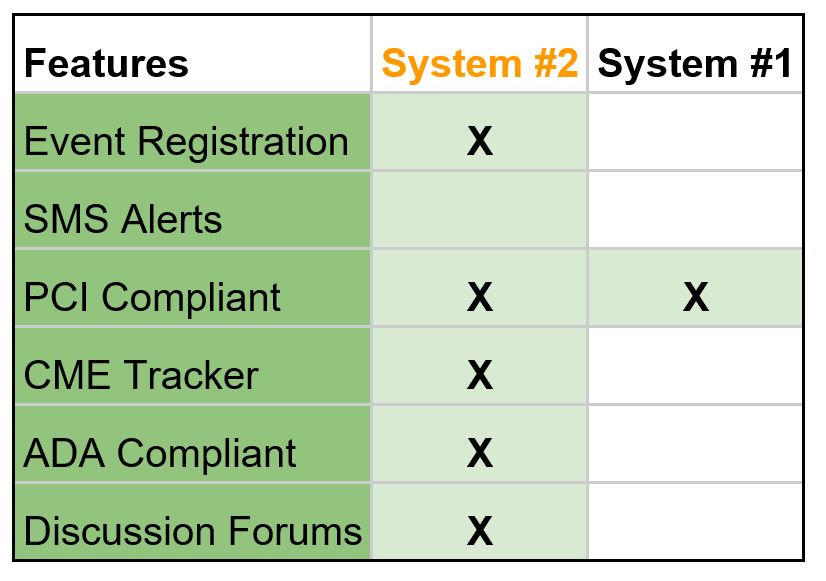Choosing an Association Management System is a complex, detailed project. You may be tempted to simply choose the system within your budget that has the most features. But you need to be careful how you count those features. As an IT Strategist, helping Associations with the transition to a new AMS is my favorite process re-engineering type of project because it tends to involve almost every aspect of running an Association. Everything starts with picking the right system.
As an IT Strategist, helping Associations with the transition to a new AMS is my favorite process re-engineering type of project. Because it tends to involve almost every aspect of running an Association. Everything starts with picking the right system.
This short article only addresses one aspect of the hunt: write your own list of demands. I will not be advocating one system over any other. I won’t even name any systems.
I just want to advise against using published comparisons. That’s right. I want you to find the AMS that makes sense for you without using the ubiquitous guides that compare one system to another.
Here’s why: None of those lists is your list.
Even if feature by feature the list describes your needs, very likely the language being used can mean too many things. A simple example is a feature list that includes “Accounting Integration”. Pretty easy to see how that is a useless check mark without knowing which systems it integrates with right? Less obvious are features like “Calendar Management” or “Data Import” or “Email Distribution”. Data Import or Email Distribution may not have what you’re looking for at all. Be prepared to do the detailed work to understand your processes now and what you want them to become. Find the right fit without relying on a vendor telling you they can customize a solution for you. If they do tell you that, ask them how well that’s going to work when they roll out the next version of their main project.
And you need to be wary of who wrote the comparison list. A good guess is whichever company is on the left side of the screen. But even if there is no intended bias whatsoever, one product may have more check marks than the other. So I’m suggesting, don’t count the check marks.
So I’m suggesting, don’t just add up the check marks.
Here’s a highly simplified example of two separate comparisons.
System #1 compared to System #2 looks like this:

And System #2 compared to System #1 looks like this:

Which one is the winner?
That depends on your list, right? Only your list is worth comparing to another list. Remember there is no objective list of features.
So make your own list. This works for choosing your AMS and pretty much everything else, too.
Bonus Content: If shopping for an AMS, here are few more things to keep in mind:
If you don’t have the right IT experience on staff, consider outsourcing someone to help you with this process.
Understand the real cost of ownership
Maintenance
Security
Merchant Account Fees
Ongoing Support
Member Support for new system
Upgrades / Technology Refresh
System Performance Measurement
Customizations
Disaster Recovery
Have an Exit Plan
Own your data
Own your custom source code
Maintain access to every account
– your registrar
– your website
– your database
– your email administration
– 3rd party licenses